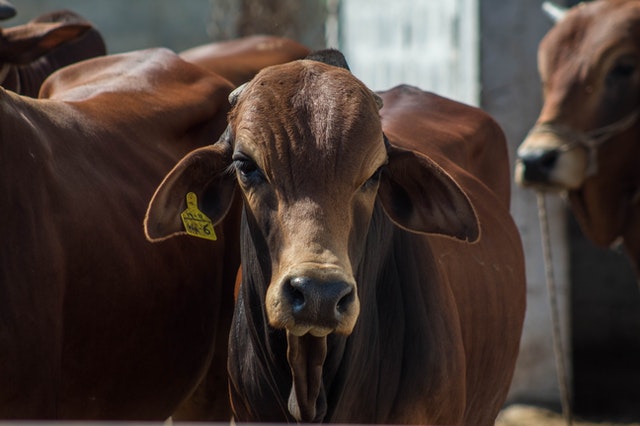Are you wondering if beetroot (Beta vulgaris) growing is beneficial? This blog post will explore the profitability of beetroot farming in Kenya. We will cover, climate and soil requirements, planting and harvesting methods, beetroot varieties etc. Besides, we will give you the costs, profits, and challenges of beetroot growing in Kenya.
Beetroot farming in Kenya can be both a valuable and a profitable venture for you. The versatile crop can be farmed as a food crop or cash crop. Beetroot is a hardy crop that can be grown in a wide range of climates. It is one of the well-suited crops to Kenya’s diverse weather conditions and geographies making it an important crop for the Kenyan market.
Overview of Beetroot vegetable
Beetroot belongs to the Amaranthaceae family and is closely related to spinach, chard, and quinoa.
It is a root vegetable that is often used for its large, edible taproot. Beetroot greens are also edible and nutritious, and they can be used in fresh juices, salads, sautés, and as a cooked vegetable. The taproot of the beetroot is rich in vitamins and minerals and can be used in a variety of dishes, including salads, soups, and as natural food coloring. The leaves of the beetroot can be used as a substitute for spinach in many dishes.
Why Beetroot farming?
Beetroot is in high demand in the Kenyan market, both for food and industrial purposes. It is a nutritious vegetable that can be enjoyed in a variety of ways and has many health benefits.
It is a good source of folate, manganese, potassium, iron, and vitamin C. Beetroot has many recipes and it can be prepared by roasting, boiling, or grilling it.
Among its many health benefits, eating beets is known to lower blood pressure, improve digestion, and boost cardiovascular health as well as exercise performance. Beetroot is also low in calories and high in fiber, making it a great food to include in a weight loss diet.
Beetroot is also a good source of antioxidants, which can help protect the body against free radicals and may reduce the risk of certain diseases.
Where do beetroots grow best in Kenya?
Are you wondering if your county is good for beetroot farming? Beetroot prefers the following climate and soil requirements for the highest yields
- Well-drained loose, loamy to sandy soils that are rich in organic matter and have a pH of 6.0-7.0.
- Consistent moisture throughout the growing season.
- Temperatures between 10-30°C (50-85°F).
In addition, Beetroot is a hardy and cool weather crop and it can be grown throughout the year as long as there is enough water. It can tolerate frost and light frost, making it a good choice for farmers in high-altitude areas.
In Kenya, the main beetroot-producing counties are Nakuru, Kiambu, and Tharaka Nithi. Others are Nyeri, Kirinyaga and Murang’a. On the Western side, beetroot is grown in Kericho, Bungoma, and Kakamega counties.
How to grow beetroots in Kenya
Beetroot is a low-maintenance crop. It has few agronomic requirements from land to post-harvest handling. This section will give you some of the best recommendations and tips for high yields.
Land Preparation
Proper land preparation is crucial for successful beetroot farming. Here are some steps to take when preparing land for beetroot cultivation:
- Soil testing: Analyse your soil to determine its pH level (acidity), nutrient content, and soil structure. Beetroot prefers a soil pH between 6.0 and 7.0 and requires a well-draining soil that is rich in organic matter.
- Clearing and tilling: Clear the land of any debris, rocks, or weeds. Then, till the soil to a depth of at least 6 inches to create a smooth, level seedbed. This will make it easier to plant the seed and will allow the roots to develop properly.
- Bed formation: Considering beetroot for your kitchen garden? Beetroot is a shallow-rooted crop and does well when grown on raised beds. This allows for better drainage and aeration of the soil.
Seed Selection, Propagation & Planting
Are you searching for the best beetroot varieties in Kenya? The table below has the 7 top beetroot varieties in Kenya, highlighting their yield potential, maturity periods, and unique features that make them appealing for both farmers and consumers
| Variety | Yield (tonnes/acre) | Maturity Period (days) | Best Features |
|---|---|---|---|
| Detroit Dark Red | 10-12 | 58 | Rich flavor, adaptable to various soils. |
| Crimson Globe | 12-15 | 70 | Round shape, smooth skin, high market demand. |
| Cylindra | 10-12 | 60 | Cylindrical shape, ideal for uniform slicing. |
| Chioggia Pink | 8-10 | 60 | Attractive red and white rings, sweet flavor. |
| Burpee’s Golden | 8-10 | 55-65 | Yellow roots, tender texture, nutritious greens. |
| Touchstone Gold | 8-10 | 55 | Attractive red and white rings, a sweet flavor. |
| Early Wonder | 10 | 52 | Early harvesting, sweet taste, good for fresh markets. |
Most commercial farmers plant the Detroit Dark Red and the Early Wonder Tall Top. These beet varieties are known for their high yield and disease resistance
In Kenya, beetroot is planted in the rainy seasons, which are typically from March to May and October to December.
Beetroot is a hardy and easy-to-grow vegetable. It’s sown directly into the seedbed without first sowing them in a nursery. The recommended seed rate is 6-7kg per hectare. Under ideal conditions, beetroot seeds will germinate within 7-14 days.
Weeding, gapping & Weeding
Plant one seed every 1 inch at a depth of 0.5 inches. Beetroot spacing is in rows spaced 12–15 inches apart.
Beetroot seedlings should be thinned to about 3-4 inches apart once they reach about 2 inches tall.
Fertilization
Based on the results of the soil test, apply the appropriate amount of fertilizer to the soil. Organic fertilizer is preferable but you can also use mineral fertilizers.
Beetroot is a heavy feeder and requires regular fertilization throughout the growing season. A nitrogen-rich fertilizer should be applied when the seedlings are 2-3 inches tall, and again 2-3 weeks later.
Irrigation
Beetroot also requires about 1 inch of water per week, so it’s important to keep the soil consistently moist throughout the growing season. Drip irrigation is the most efficient method, but you can also use furrow irrigation or sprinklers.
Beetroot is also sensitive to high temperatures and humidity, so it’s important to provide plenty of air circulation and shade the plants during the hottest part of the day.
Pests and diseases management
Beetroot is a relatively hardy crop that is resistant to many pests and diseases. However, there are a few common pests and diseases that can affect beetroot farming in Kenya. Here are a few examples:
- Beet armyworm: This insect pest feeds on the leaves of beetroot plants, causing them to become ragged and holes. It is controlled by using pesticides like carbofuran, methomyl and chlorpyrifos.
- Aphids: These small, soft-bodied insects can cause damage to the leaves of beetroot plants by feeding on the sap. They can also transmit viral diseases. They can be controlled by using pesticides or by introducing natural predators like ladybugs or lacewings.
- Cercospora leaf spot: This fungal disease causes small, circular spots to appear on the leaves of beetroot plants. The spots may turn brown and the leaves may wilt and die. It can be controlled by using fungicides, crop rotation, and proper sanitation.
- Damping off: This is a fungal disease that affects seedlings, causing them to wilt and die. It can be controlled by using fungicides and by avoiding over-watering and overcrowding of seedlings.
- Root-knot nematode: These tiny worms feed on the roots of beetroot plants, causing them to become stunted and discolored. It can be controlled by crop rotation, using nematicides and resistant varieties.
- Curly top virus: This viral disease causes the leaves of beetroot plants to become distorted and curled. It can be controlled by destroying infected plants, using resistant varieties, and by controlling the beet leafhopper, the insect vector.
It’s important to keep an eye out for these pests and diseases and to take appropriate action to control them as soon as they are detected. Consult with a local agronomist or extension officer for more specific information and recommendations on how to control pests and diseases that are specific to your region.
Harvesting & quality control
It’s important to harvest beetroot when they are at the right stage of maturity, as over-mature beets will have a woody texture and can be difficult to peel. Also, it’s important to be gentle when harvesting and handling the beets to prevent damage to the bulbs.
Beet greens can be harvested at any time, but they are most tender when the beets are small. They can be used like spinach or any other greens
Beetroot is ready to harvest when the bulbs are firm and have reached a desirable size. The maturity period for beetroots in Kenya is 60-70 days after planting.
Use a garden fork or spade and carefully dig around the base of the plant to loosen the soil. Be careful not to damage the bulbs when digging them up. Carefully pull the beets out of the soil, being mindful not to break off the leaves or the taproot.
Post-Harvest Management
To ensure the quality and taste of beetroot is preserved after harvesting, consider the following 2 practices to ensure quality.
- Washing and cleaning: Rinse the beets thoroughly under running water to remove any dirt or debris.
- Storage: Beets can be stored for up to several weeks in a cool, dark, and humid place. They can also be stored in the refrigerator in a plastic bag with a damp towel to keep them fresh.
Crop Rotation
Beetroot should be rotated with other crops to avoid disease and pest buildup in the soil. Rotation with non-cruciferous crops like corn, beans, and cereals is recommended.
Costs and Profits of Beetroot Farming in Kenya
The initial investment costs for beetroot growing in Kenya can vary depending on the scale of the operation and the equipment used. The main costs include land, seeds, equipment, and labor. The cost of land varies depending on location, but it typically ranges from KES 20,000 to KES 50,000 per acre. The cost of seeds can also vary depending on the variety and the quantity needed, but it typically ranges from KES 1,000 to KES 3,000 per acre. Equipment costs can include things such as a plow, harrow, and irrigation system, and can range from KES 30,000 to KES 50,000. Labor costs will depend on the number of workers needed, and can range from KES 10,000 to KES 20,000 per acre.
Operating costs for beetroot farming in Kenya include fertilizer, pesticides, and irrigation. The cost of fertilizer can range from KES 5,000 to KES 10,000 per acre, while the cost of pesticides can range from KES 2,000 to KES 5,000 per acre. Irrigation costs will depend on the type of irrigation system used, but can range from KES 15,000 to KES 30,000 per acre.
The current market prices for beetroot in Kenya range from KES 50 to KES 100 per kilo. The potential profits and returns on investment for beetroot farming in Kenya can be quite high, with farmers earning a profit of KES 100,000 to KES 250,000 per acre.
Challenges and Risks of Beetroot Farming in Kenya
Like any farming venture, beetroot farming in Kenya comes with its own set of challenges and risks. Pest and disease management are a major concern, with pests such as aphids, beet armyworm, and beet webworms posing a significant threat to the crop. Weather and climate risks, such as floods and droughts, can also negatively impact the crop. Market fluctuations and competition from other farmers and imported products can also affect the profitability of beetroot farming in Kenya.
To mitigate these risks, farmers can implement crop rotation, use organic farming methods, and invest in pest and disease management techniques. Additionally, farmers can diversify their crops to reduce their reliance on a single crop.
Conclusion
In conclusion, beetroot farming in Kenya offers promising financial returns with manageable initial investments and operating costs. The combination of high market demand and favorable growing conditions makes it an attractive option for both new and experienced farmers looking to diversify their agricultural practices. However, farmers should remain aware of challenges such as pest management and market fluctuations that may impact profitability.
References and Additional Resources




Is beetroot farming viable 1000ft above see level (Geta Ward in Nyandarua County (Kipipirisubcounty)